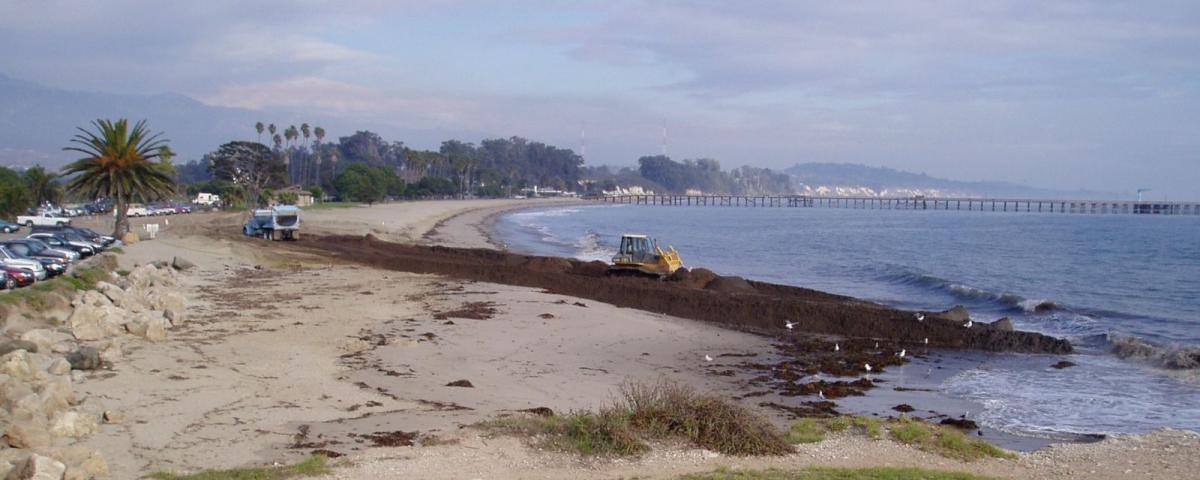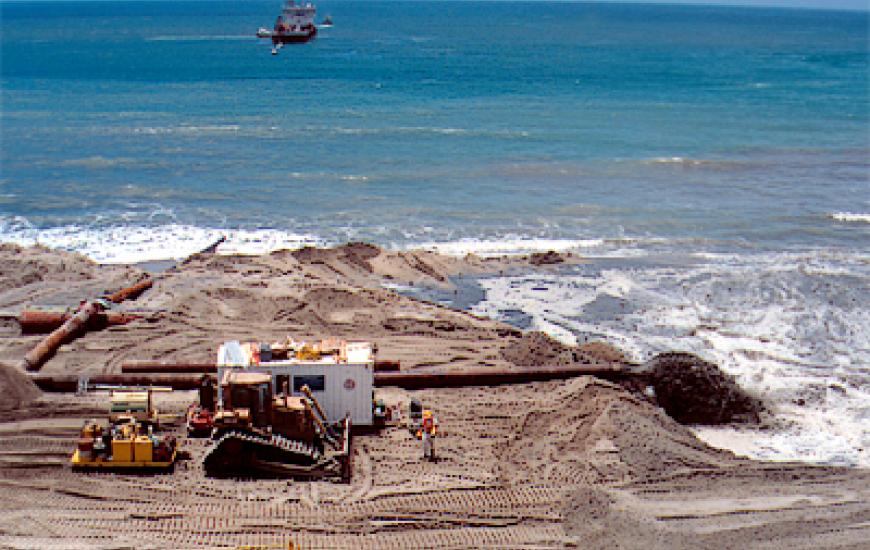
In addition, as sea level rises, armoring that may be presently above the reach of waves and tides will become exposed to wave processes.
Beachapedia explains some terminology for the various impacts of seawalls on beaches.
Explore the interactive map to find an armored or pristine beach near you
Why Add Sand to the Beach?
Beach nourishment, or beach filling, is the practice of adding large quantities of sand or sediment to beaches to combat erosion and increase beach width. Often referred to as a “soft armoring” technique, it is sometimes viewed as a superior alternative to hard armoring because it avoids some of the major pitfalls associated with hard structures like seawalls. With sea level rise and storms threatening to erode sandy beaches, it is likely that nourishment will become more prevalent as managers seek to protect valuable coastal property.
What Are the Consequences of Beach Nourishment?
- The sudden input of massive amounts of sand can kill all the animals living on the beach.
- During nourishment, the beach becomes a major construction zone. The heavy machinery used to truck in and distribute new sand also kills beach animals and disturbs wildlife.
- The new sand may not be the same grain size or chemical makeup of the natural sand, changing the habitat that beach animals rely upon.
- The resulting catastrophic loss of intertidal prey resources for wildlife such as shorebirds means these birds have to travel to another beach to find food.
- The time needed for a beach ecosystem to recover from a single beach filling episode is not known, even when fill sand is the right size and type. Repeated or frequent episodes of nourishment can impede recovery of the beach community and ecosystem.
- Some types of animals, such as sand crabs, start their lives as free-floating larvae that drift through the ocean with the currents, so they can float in from elsewhere and recolonize the beach in a year. However, if the nourishment episode coincides with this event, then the population will not have a chance to begin repopulating the beach until the following year.
- Long-lived species that do not reproduce often, such as Pismo clams, may take decades to recover.
- Beach animals that carry their young in pouches (rather than producing free-floating young), such as amphipods and isopods, depend entirely on resident populations for recovery. These animals may require human help to return to a beach impacted by nourishment.
- As the ocean starts eroding the introduced sand, the water offshore can become muddy, potentially smothering marine life and changing coastal water quality. Critters that rely on relatively clean, clear water, like clams, can die off in large numbers. The eroding sand can also cover kelp forests, rocky intertidal reefs and seagrass beds, and it can end up clogging the mouths of estuaries, altering vital tidal exchange.
- The grain size of the introduced sand can influence how fast it erodes, leading to changes in beach shape.
- The added sand is often mined from places underwater or in riverbeds. Mining can alter those environments and make that limited resource unavailable for future projects.
Is Nourishment Effective?
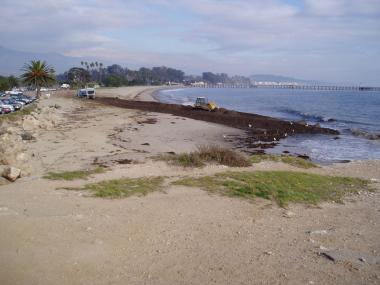
Nourishment is not a long-term solution to beach erosion. The erosive forces of waves, storms, and rising sea levels do not disappear after nourishment takes place. Waves will continue to “chew on” the sand, and eventually it erodes away, moving down the coast and offshore. Therefore, nourishment can protect coastal structures for as long as the sand lasts, but after a certain period of time, the beach will have to be renourished. The associated price tag can be quite high.
Which is Better: Seawalls, Nourishment, or Retreat?
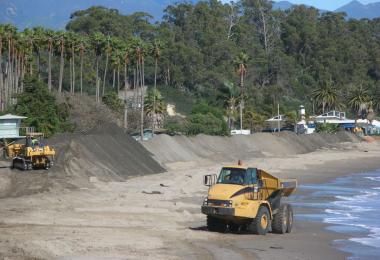
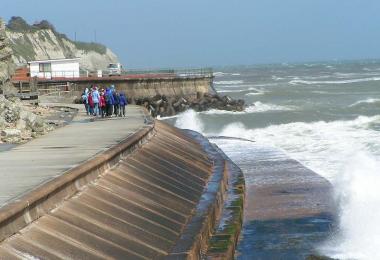
Both armoring and nourishment have negative consequences but experts generally believe that nourishment is preferable to hard armoring (e.g. seawalls). There also is a third option. If humans create or maintain open space inland from the beach, the beach can slowly migrate inland rather than eroding away entirely. This practice of managed retreat, while challenging, is preferable to both nourishment and armoring because it preserves the natural beach.
Best Practices
If nourishment must be performed, it should be done in the least environmentally impactful way possible. Experts recommend the following:
- Use sand with a similar composition to the natural sand.
- Place sand up coast and in the nearshore zone and allow waves to move it onto and along the beach.
- Plough the sand immediately after nourishment to prevent it from becoming so compact that it is inhospitable to beach critters.
- Execute the nourishment at a time of year when birds and other mobile organisms are less prevalent.
- Perform several small nourishment projects rather than a single large project to allow some beach animals to survive. Keep the project footprint as small as possible.
- Allow enough time between nourishment projects for the slowest reproducing beach organism to recolonize and reproduce.
For more information on these recommendations, refer to Speybroeck et al. 2006 in the References section.
Quick Facts
- Beach nourishment, or beach replenishment, is the practice of adding sand or sediment to beaches to combat erosion and increase beach width.
- Beach nourishment is viewed as an alternative to armoring.
- Nourishment can kill or scare away critters that live on the beach, change the type of sand that many animals depend on, and make the nearby seawater muddy, which can smother marine life. This added sand also can smother rocky reefs, kelp forests, and seagrass beds and can clog the mouths of estuaries as it moves along shore.
- Beach nourishment is not a long-term solution; eventually waves and storms will erode away the additional sand, and nourishment will have to be repeated.
- There are a variety of beach nourishment methods, some more environmentally friendly than others.


